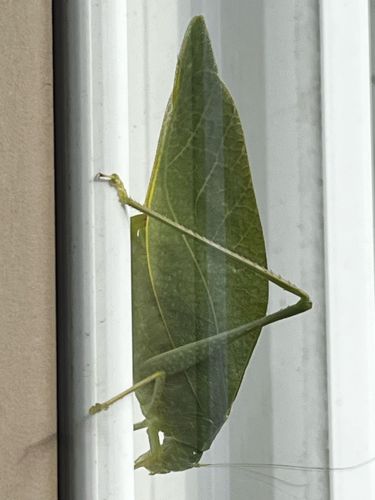Katydid
Scientific Name: Tettigoniidae
Order & Family: Orthoptera (Order), Tettigoniidae (Family)
Size: Most common species range from 2 to 10 cm (0.8 to 4 inches) in body length, though some tropical species can be larger.

Natural Habitat
Katydids are typically found in trees, shrubs, and tall grasses, often blending in perfectly with the foliage. They prefer warm, humid environments.
Diet & Feeding
The majority of katydids are herbivores, feeding on leaves, flowers, and tree bark. Some species are omnivorous, consuming small insects, while a few are predatory.
Behavior Patterns
Katydids are known for their superb camouflage, mimicking leaves, sticks, or bark. Males produce calls (stridulation) by rubbing their wings together to attract mates, typically at night. They are mostly nocturnal.
Risks & Benefits
Generally, katydids pose no risk to humans. In large numbers, some species can cause minor damage to garden plants. Ecologically, they are a food source for birds and other animals, and some species can assist in pollination.
Identified on: 10/18/2025